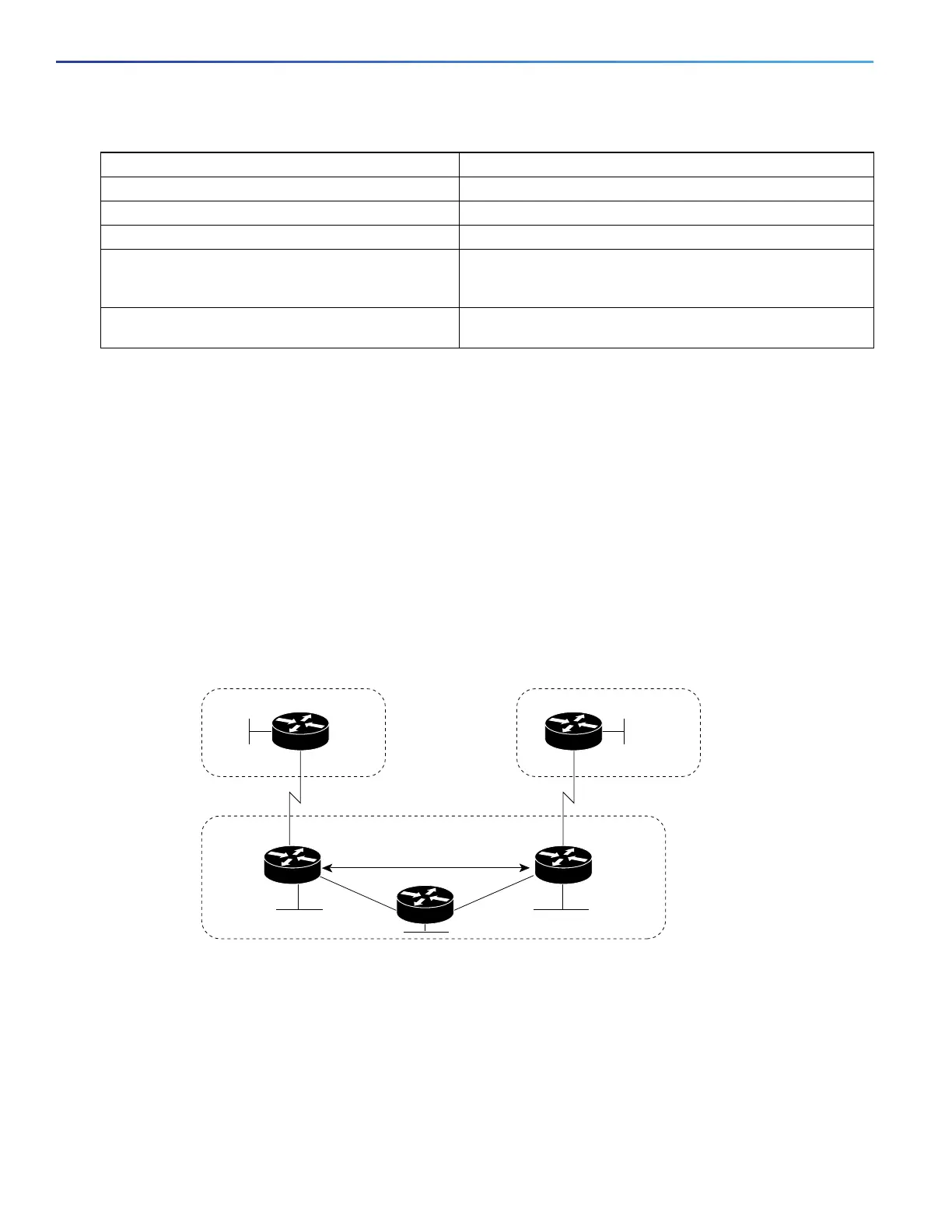846
Configuring IP Unicast Routing
Configuring BGP
Configuring BGP
The Border Gateway Protocol (BGP) is an exterior gateway protocol used to set up an interdomain routing system for
loop-free exchanges of routing information between autonomous systems. Autonomous systems are made up of routers
that operate under the same administration and that run Interior Gateway Protocols (IGPs), such as RIP or OSPF, within
their boundaries and that interconnect by using an Exterior Gateway Protocol (EGP). BGP Version 4 is the standard EGP
for interdomain routing in the Internet.
For details about BGP configuration and commands, see the BGP documents listed in Related Documents, page 924.
Routers that belong to the same autonomous system (AS) and that exchange BGP updates run internal BGP (IBGP), and
routers that belong to different autonomous systems and that exchange BGP updates run external BGP (EBGP). Most
configuration commands are the same for configuring EBGP and IBGP. The difference is that the routing updates are
exchanged either between autonomous systems (EBGP) or within an AS (IBGP). Figure 101 on page 846 shows a
network that is running both EBGP and IBGP.
Figure 101 EBGP, IBGP, and Multiple Autonomous Systems
Before exchanging information with an external AS, BGP ensures that networks within the AS can be reached by defining
internal BGP peering among routers within the AS and by redistributing BGP routing information to IGPs that run within
the AS, such as IGRP and OSPF.
Routers that run a BGP routing process are often referred to as BGP speakers. BGP uses the Transmission Control
Protocol (TCP) as its transport protocol (specifically port 179). Two BGP speakers that have a TCP connection to each
other for exchanging routing information are known as peers or neighbors. In Figure 101 on page 846, Routers A and B
are BGP peers, as are Routers B and C and Routers C and D. The routing information is a series of AS numbers that
describe the full path to the destination network. BGP uses this information to construct a loop-free map of autonomous
systems.
Command Purpose
clear ip eigrp neighbors [if-address | interface] Delete neighbors from the neighbor table.
show ip eigrp interface [interface] [as number] Display information about interfaces configured for EIGRP.
show ip eigrp neighbors [type-number] Display EIGRP discovered neighbors.
show ip eigrp topology
[autonomous-system-number] | [[ip-address]
mask]]
Display the EIGRP topology table for a given process.
show ip eigrp traffic [autonomous-system-number] Display the number of packets sent and received for all or a
specified EIGRP process.
AS 100
74775
AS 200
129.213.1.2
175.220.212.1
129.213.1.1
192.208.10.2
AS 300
EBGP
EBGP
192.208.10.1
175.220.1.2
IBGP
Router B
Router A
Router D
Router C
